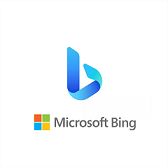Implications of Temperature and Rainfall Variability on Wheat Vegetative Health and Grain Yield in Narok County of Kenya
Abstract
This study investigated the implications of temperature and rainfall on wheat vegetative health and grain yield in Narok County, Kenya, using Normalized Difference Vegetation Index (NDVI) and annual grain yield data as dynamic indicators of crop performance. Meteorological data were sourced from the Narok Meteorological Station in the form of monthly averages for temperature and rainfall for the period 1975 – 2022. Data analysis tools included correlation and regression techniques. May rainfall and minimum temperatures in April and June were found to significantly affect NDVI, while September minimum temperature, June maximum temperature, and March–May rainfall significantly influenced grain yield. Quantile regression revealed that rainfall in May consistently increased NDVI across 25th, 50th, and 75th percentiles, whereas June’s minimum temperature had a varied influence depending on the crop’s canopy density. Similarly, grain yield was positively associated with September minimum temperature and March-April-May rainfall, especially at low and high yield levels, while an increase in June’s maximum temperature significantly contributed to reduced yields across years. The findings reject the null hypothesis while confirming that wheat NDVI and grain yield are significantly influenced by climatic variables, particularly at distributional extremes. By integrating NDVI into the analysis, this research bridges a methodological gap, offering a more comprehensive assessment of climate impacts on crop performance beyond final yields. The study underscores the need for tailored agronomic and climate adaptation strategies that consider intra-seasonal climate variability and its differential effects on wheat health and productivity
Downloads
References
Asseng, S., Ewert, F., Martre, P., et al. (2015). Rising temperatures reduce global wheat production. Nature Climate Change, 5(2), 143-147. https://doi.org/10.1038/nclimate2470
Esilaba, A. O., Njenga, M., Mairura, F., Gachimbi, L., Kathumo, V., & Makini, F. (2019). KCEP-CRAL climate-smart agriculture extension manual. Kenya Agricultural and Livestock Research Organization. https://kalroerepository.kalro.org/server/api/core/bitstreams/ 7982eb53-a750-45e6-857f-b99d5edc901a/content.
Fan, Y., Lv, Z., Ge, T., Li, Y., Yang, W., Zhang, W., Ma, S., Dai, T., & Huang, Z. (2021). Night-warming priming at the vegetative stage alleviates damage to the flag leaf caused by post-anthesis warming in winter wheat (Triticum aestivum L.). Frontiers in Plant Science, 12, 706567. https://doi.org/10.3389/fpls.2021.706567.
Farooq, M., Bramley, H., Palta, J. A., & Siddique, K. H. M. (2011). Heat stress in wheat during reproductive and grain-filling phases. Critical Reviews in Plant Sciences, 30(6), 491–507. https://doi.org/10.1080/07352689.2011.615687.
Food and Agriculture Organization of the United Nations. (2023, June 12). GIEWS country brief: The Republic of Kenya. Global Information and Early Warning System on Food and Agriculture. https://www.fao.org/giews/countrybrief/country.jsp?code=KEN
Food and Agriculture Organization of the United Nations. (2022). World food and agriculture: Statistical yearbook 2022. FAO. https://doi.org/10.4060/cc2211en.
Food and Agriculture Organization of the United Nations. (2011). Potential effects of climate change on crop pollination. Food & Agriculture Organization of the UN (FAO).
Grains Research and Development Corporation. (2005). Cereal growth stages: The link to crop management (ISBN 1-875477-40-3). Grains Research and Development Corporation.
Hussain, B., Shaheen, S., Ali, U., & Almas, L. K. (2023). Climate volatility, wheat productivity, and food security: A quantile regression analysis. WSEAS Transactions on Environment and Development, 19, 109. https://doi.org/10.37394/232015.2023.19.109.
Kadhim, Z., Alwan, I. A., & Khayyun, T. (2022). Impact of climate change on crop productivity using MODIS-NDVI time series. Civil Engineering Journal, 8(6), 1136-1146. https://doi.org/10.28991/CEJ-2022-08-06-04.
Kamwaga, J., Macharia, G., Boyd, L., Chiurugwi, T., Midgley, I., Canales, C., Marcheselli, M., & Maina, I. (2016). Kenya wheat production handbook. Kenya Agricultural and Livestock Research Organization. https://www.kalro.org/download/kenya-wheat-production-handbook/?wpdmdl=1842&refresh=6863726a4178d1751347818.
Kenya Meteorological Department (KMD). (2021). Extreme weather events in Kenya between 2011 and 2020. Kenya Meteorological Department
Kenya National Bureau of Statistics. (2020b). Kenya population and housing census results. Kenya National Bureau of Statistics. https://www.knbs.or.ke/2019-kenya-population-and-housing-census-results/.
Kenya National Bureau of Statistics. (2024). National agriculture production report: 2023–2024. Nairobi, Kenya. https://www.knbs.or.ke/wp-content/uploads/2025/01/National-Agriculture-Production-Report-2024.pdf.
Kim, Y.-U., Webber, H., Adiku, S. G. K., Noia Júnior, R. de S., Deswarte, J.-C., Asseng, S., & Ewert, F. (2023). Mechanisms and modelling approaches for excessive rainfall stress on cereals: Waterlogging, submergence, lodging, pests and diseases. Agricultural and Forest Meteorology, 341, 109819. https://doi.org/10.1016/j.agrformet.2023.109819
Kirui, B. K., Makokha, G. O., & Kuria, B. T. (2022). Calibration and parameterization of APSIM-Wheat using Earth observation data for wheat simulation in Kenya. Journal of Agricultural Informatics, 13(1), 9–18. https://doi.org/10.17700/jai.2022.13.1.629
Megersa, G., Tesfaye, K., Getnet, M., Tana, T., Jaleta, M., & Lakew, B. (2020). Rainfall variability and its implications for wheat and barley production in Central Ethiopia. Ethiopian Journal of Crop Science, 7(2). https://www.researchgate.net/publication/343862379
Ministry of Agriculture and Livestock Development, MoALD. (2023) http://statistics.kilimo.go.ke/en/aezmap
Ministry of Agriculture, Livestock, Fisheries and Co-operatives (MoALFC). (2021). Kenya county climate risk profile: Narok County (33 p.). Nairobi, Kenya: MoALFC. https://cgspace.cgiar.org/handle/10568/115039
Narok County Government, Department of Environment, Water, Energy, Natural Resources and Climate Change. (2023). Narok County participatory climate risk assessment report. https://narok.go.ke/wp-content/uploads/2024/04/Reviewed-Final-PCRA-Report.pdf.
Narok County Government. (2018). Narok County Integrated Development Plan 2018–2022. County Government of Narok. https://narok.go.ke/wp-content/uploads/2022/06/NAROK-CIDP-2018-2022.pdf.
Ni, R., Zhu, X., Lei, Y., Li, X., Dong, W., Zhang, C., Chen, T., Mburu, D. M., & Hu, C. (2022). Effectiveness of common preprocessing methods of time series for monitoring crop distribution in Kenya. Agriculture, 12(1), 79. https://doi.org/10.3390/agriculture12010079.
Ombogo O. and Karanja, A.M (2022). Regression Models in Forecasting Crop Yield under Climate Change Scenarios, International Journal of Innovative Research & Development. https://doi.org/10.24940/ijird/2022/v11/i3/MAR22049.
Ombogo, O. M. (2016). Forage Dynamics in the Face of Rainfall Variability across Pastoral Plains of Kajiado, Kenya. The International Journal of Science & Technoledge, 4(11), 30.
Pais, I. P., Moreira, R., Semedo, J. N., Ramalho, J. C., Lidon, F. C., Coutinho, J., Maçãs, B., & Scotti-Campos, P. (2023). Wheat crop under waterlogging: Potential soil and plant effects. Plants, 12(1), 149. https://doi.org/10.3390/plants12010149
Pandey, A., Mishra, S. R., Agrahari, R. K., & Singh, A. K. (2023). Influence of weather variability on the growth and development of wheat crop: A review. International Journal of Agriculture, Environment and Biotechnology, 16(4), 275– 285. https://doi.org/10.30954/0974-1712.04.2023.6.
Rodríguez-Esparragón, D., Marcello, J., Eugenio, F., & Gamba, P. (2024). Index-based forest degradation mapping using high and medium resolution multispectral sensors. International Journal of Digital Earth, 17(1). https://doi.org/10.1080/17538947.2024.2365981
Saleem, A., Anwar, S., Nawaz, T., Fahad, S., Saud, S., Rahman, T. U., Khan, M. N. R., & Nawaz, T. (2024). Securing a sustainable future: The climate change threat to agriculture, food security, and sustainable development goals. Journal of Umm Al-Qura University for Applied Sciences, 10(1), 1–14. https://doi.org/10.1007/s43994-024-00177-3
Seginer, I., & Tarnopolsky, M. (1999, July). Ground treatments to relieve heat stress of a sparse greenhouse canopy [Conference paper]. 1999 ASAE/CSAE-SCGR Annual International Meeting, Toronto, Ontario, Canada. https://www.researchgate.net/publication/262032170
Shisanya, C. A., Recha, C., & Anyamba, A. (2011). Rainfall variability and its impact on the normalized difference vegetation index in arid and semi-arid lands of Kenya. International Journal of Geosciences, 2(1), 36–47.https://doi.org/10.4236/ijg.2011.21004
United States Department of Agriculture (2024) MODIS-Terra. https://ipad.fas.usda.gov/cropexplorer/
Copyright (c) 2025 Opole Ombogo, Humphreys Obulinji, Amon Karanja

This work is licensed under a Creative Commons Attribution 4.0 International License.




























